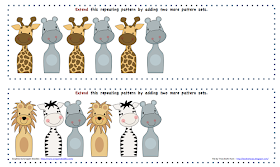Let's start with the actual story. It opens in the spring with a family of four (mom, dad, son, daughter)—five if you count the cat, and seven if you count their amazingly smart chickens—preparing to plant a garden. The soil is prepared, seeds are planted, and then watered. Narrated by Alice, the young girl in the story, her observations and wonderings immediately set the stage for the science that is to come. Here's an excerpt.
I try to imagine what's going on under that soil. Are our seeds alive and growing? Every morning we hurry out of bed and check to see if anything has sprouted. But days go by and still our garden looks like an empty patch of brown.
Alice leads readers through the many stages of growth of in the garden, spending time closely observing everything that unfolds. She spots a rabbit munching on the vegetables, a hawk swooping down and snatching an unsuspecting grasshopper, many insects eating plants or other insects, and a robin capturing and eating an earthworm. As fall arrives, the vegetables are harvested and many are put up for the winter.
Complementing the story are Lamont's beautifully rendered pen and watercolor illustrations. There is a tremendous amount of detail in them, giving readers much to look for. In addition to the main illustrations that support and help to tell the story, there are small boxes and bits of informational drawings and text scattered throughout.
While the CIP data for the book indicate that this is fiction, there is a TON of information in it. First, there are two chickens, Maisy and Daisy, who appear throughout the book and provide information on everything from composting, to the plant parts we eat, to food chains and food webs, and more. There are also speech balloons where the characters describe what they are seeing. All the concepts in the text are explained in kid-friendly, highly accessible language. One of my favorite illustrations in the book is nothing more than a rendering of worm trails in the soil. However, the trails are filled with worms and information! Here's what you'll read and learn when you follow the trails and turn the book upside down and around.
Worms are a special part of the food chain. When plants die, they fall to the ground and begin to rot. The worms eat the rotting plants. As the worms tunnel around, they leave digested plant matter behind in the soil. The digested plant matter returns important nutrients to the soil. The worms also loosen up the soil as they tunnel. Then water and air get down to the plants' roots more easily. Worms help the plants grow.
Near the end of the book, Alice describes her home and compares it to their summer home, the garden. She explains that while only their family lives in their wooden home (house), their garden home includes others, like rabbits, birds, spiders, and beetles. One the opposing page, one of the chickens reads from a book that defines ecology. In the speech bubble we read these words.
Ecology is the study of all the living things in one area, or environment, and how the relate to teach other. The word "ecology" comes from the Greek word oikos, which means "house" or "home." Any living thing's environment is its home.
There is so much to love in this book, from the simple story of a family living and working together to tend the garden, to thoughtfully integrated science, to the lovely illustrations. HIGHLY RECOMMENDED.
Author: Kathleen Weidner Zoehfeld
Illustrator: Priscilla Lamont
Publisher: Knopf Books for Young Readers
Publication Date: February 2012
Pages: 40 pages
Grades: K-5
ISBN: 978-0517709900
Source of Book: Personal copy
This review was written for
STEM Friday.





















































